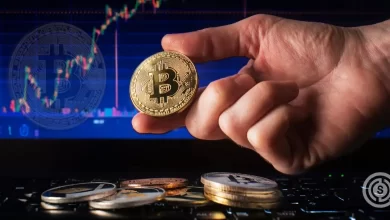Bitcoin Halving: It’s Working and Effects!

Bitcoin halvings occur every four years or after a set of 210,000 blocks have been mined. It is a process of reducing the rewards of bitcoin miners to half, hence the term “halving.”
Bitcoin halving has occurred thrice so far after its inception and market circulation. The first bitcoin halving occurred in 2012, followed by the second time in 2016 when the BTC circulation reduced to half the number. Finally, the third halving happened in May 2020. Historically, every time bitcoin halving occurs, it leads to an increase in the price of bitcoins. The final bitcoin halving is predicted to be happening in the year 2040. So, let’s see why it happens and what its impacts are?
What Is Bitcoin Halving?
As stated earlier, Bitcoin halving refers to the decrease in the number of BTC coins rewarded to miners by half approximately after four years of mining when 210,000 blocks are mined.
Bitcoin mining period is up to 2140, within which a total of 21 million BTC would be mined. At present, 18,668,631 BTC are in circulation, which is 89% of bitcoins’ total supply. Bitcoin halving is often regarded as an important event in bitcoins’ journey as they can influence its price.
Bitcoin block rewards had started at 50 BTC initially when miners validated previous transactions. At the last bitcoin halving event, the bitcoins offered to miners fell from 12.5 to 6.25 BTC. Before that, bitcoin halving happened in 2016 when miners’ reward had reduced from 25 to 12.5 BTC.
How Bitcoin Halving Works?
One block on the blockchain ledger refers to a file that stores data worth 1 MB bitcoin transactions. An increase in the number of transactions increases the block numbers and consequently the blockchain size. As miners compete to verify previous blocks of transactions, they are rewarded with new coins.
Bitcoin halving is set in the bitcoin blockchain network guiding bitcoin distribution and the mining process. It controls the supply of bitcoins and ultimately tends to increase the price and value of BTC.
Effects on Price of Bitcoin Due to Bitcoin Halving
Well, the direct impact of bitcoin halving is reflected in its price. Historically, traders have always witnessed an increase in bitcoin’s price after every event of bitcoin halving. The first time, the price of bitcoin increased from $11 to $12. The second time, bitcoins’ price fluctuated between $500-$1000 at first and then rose to $20000. The same thing was observed in the last bitcoin halving event.
Many believe that a delayed price surge is more evident than an immediate price increase. It is, therefore, anticipated that every time before the halving event, crypto investors would buy more coins in advance. The higher the demand and the lesser the supply, ultimately results in pushing the price and value of the coin upward. Before Halving you can invest in Bitcoin and later on you can get good profit from it or you can choose a Bitcoin robot like Bitcoin Revolution. The Bitcoin robot platforms can also lead you to make good money from Bitcoin.
On the contrary, some bitcoin experts argue that a subsequent decrease in the block rewards might increase transaction fees. This might make bitcoin transactions more expensive compared to other cryptocurrencies.
Why Bitcoin Halving Occurs?
It is unclear why bitcoins halve, but it is evident that the blockchain has been designed in such a manner by Satoshi Nakamoto. Bitcoin experts have deduced that halvings would control the inflation rate of bitcoins. The white paper released by Satoshi Nakamoto states the monetary policies which guide how block rewards would be paid out and the situations that would control the inflation and deflation of bitcoins. Satoshi Nakamoto programmed the blockchain to reduce the block rewards over time. The concept was straightforward; if miners have less to sell, it would automatically reduce the bitcoin supply.
Conclusion
Hopefully, it is now clear what is meant by bitcoin halving and what are its various implications. According to bitcoin researchers, at the final halving in 2040, miners would be rewarded from the network user’s fees.
FAQs:
What Happens When There Are No More Bitcoins Left in a Block?
When all the bitcoins have been mined within the mining period till 2140, the bitcoin halving schedule will stop existing as there won’t be any need to supply new bitcoins in the market. The miners’ role would continue to exist, but now they would be rewarded from the transaction fees.
What Do You Mean That Bitcoin Halves?
Bitcoin halves are nothing but the halving of the block rewards that miners earn. The number of bitcoins rewarded to miners reduces roughly after four years, known as the bitcoin halving event.
How Can I Trade the Bitcoin Halving?
Traders can either buy bitcoins in advance through an exchange or use contracts for difference (CFDs) to monitor bitcoins’ prices without actually owning the underlying coins.
Can I Make Money From the BTC Halving?
Making use of contracts for difference helps to speculate the bitcoin price movement over months around the event.



